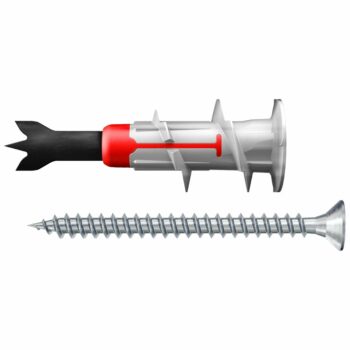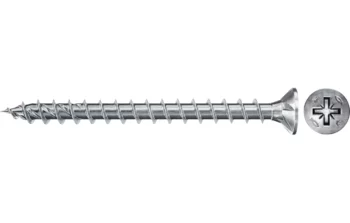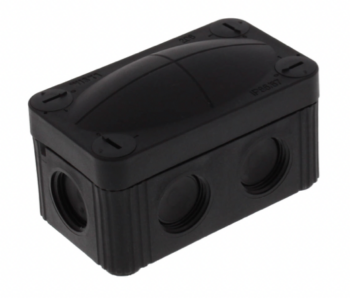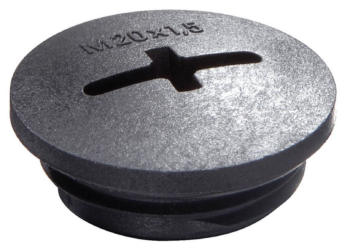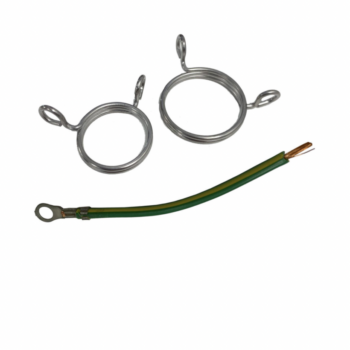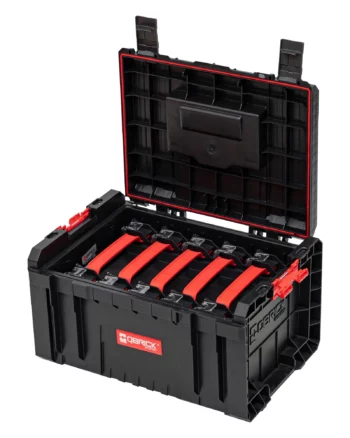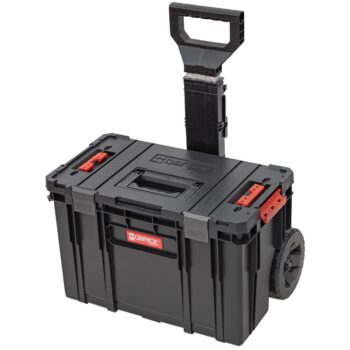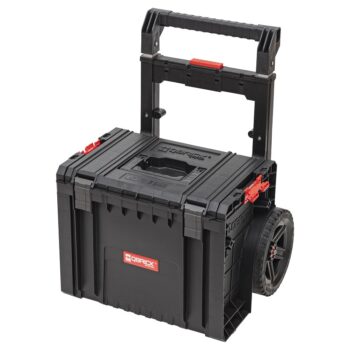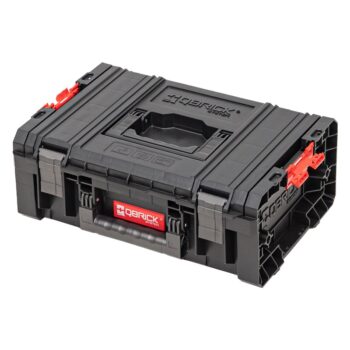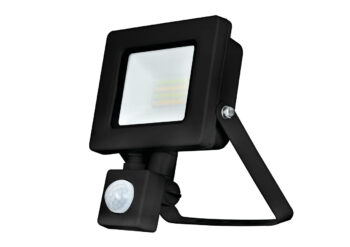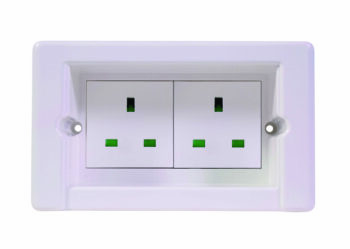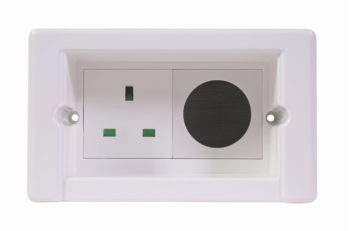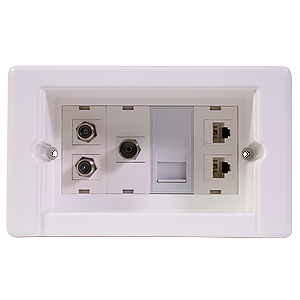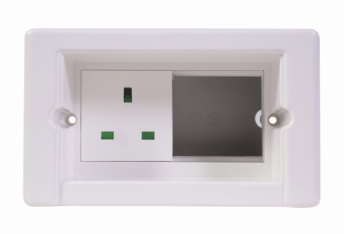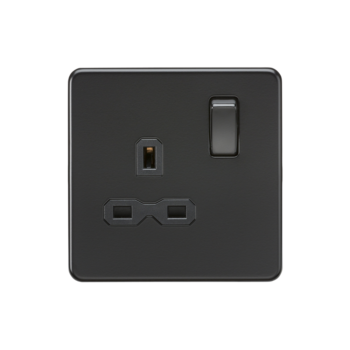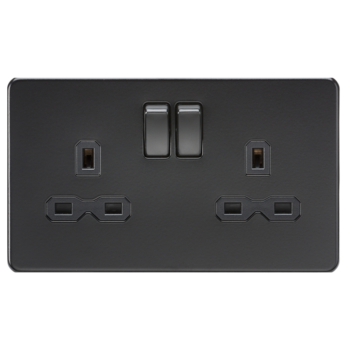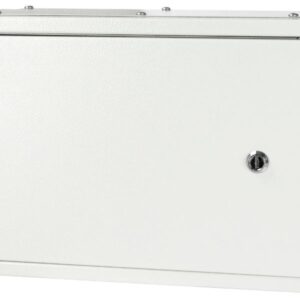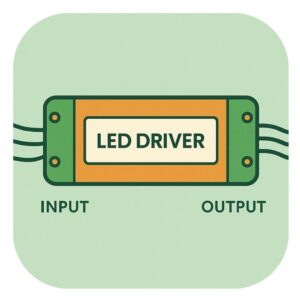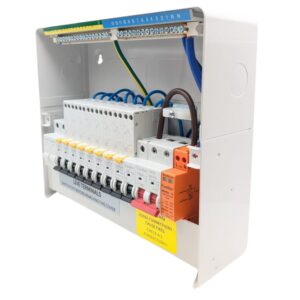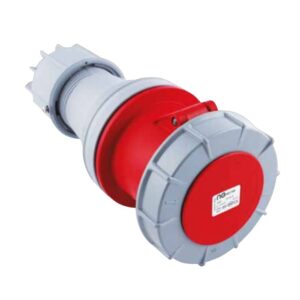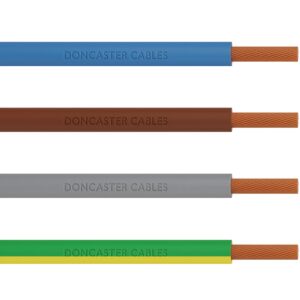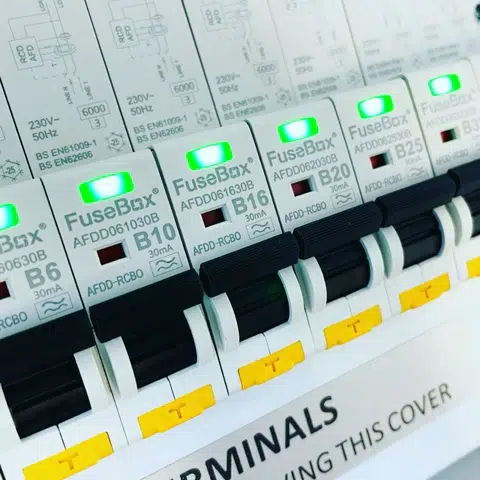
Everything You Need to Know About Arc Fault Detection Devices
In today’s world, home safety isn’t just about locking your doors and windows—your electrical system plays a huge part too. Electrical fires are a hidden threat lurking behind the walls of homes and businesses, and they can cause catastrophic damage. That’s where AFDDs (Arc Fault Detection Devices) come into play. Designed to detect and prevent electrical arc faults before they ignite a fire, AFDDs are the cutting-edge technology in electrical safety.
If you’ve heard the term AFDD but aren’t quite sure what it is or why you need one, you’re in the right place. In this comprehensive AFDD buying guide, we’ll explain everything you need to know about these life-saving devices, how they work, and why they should be a priority when updating or installing a consumer unit.
We’ll also dive into practical tips on how to choose the best Arc Fault Detection Device for your needs and provide an outlook on the future of this technology (hint: there’s a cool analogy coming up). By the end of this article, you’ll not only know what an AFDD is but also feel confident about integrating it into your home’s electrical system.
What Is an AFDD?
An AFDD, or Arc Fault Detection Device, is a safety device designed to detect dangerous arc faults in electrical systems. Arc faults happen when an electrical current jumps through air due to broken, corroded, or faulty wires, causing high-energy sparks that can lead to fires. The Arc Fault Detection Devices job is to recognize these dangerous sparks and immediately cut off the circuit before things spiral out of control.
Think of an AFDD as a super-sensitive smoke detector for your electrical wiring. Just like a smoke detector warns you before a fire can spread, an Arc Fault Detection Device detects the smallest signs of trouble, stopping potential fires in their tracks.
Why Are AFDDs So Important?
You may be wondering, why go through the trouble of installing an AFDD if traditional RCDs and MCBs already offer protection in your consumer unit? The answer lies in the specific kind of protection an Arc Fault Detection Device provides. While RCDs (Residual Current Devices) protect against earth faults and MCBs (Miniature Circuit Breakers) protect against overloading, neither can detect the unique danger posed by arc faults.
1. Prevention of Electrical Fires
Did you know that arc faults are one of the leading causes of electrical fires in the UK? Unlike other electrical faults, arc faults don’t always trip your RCD or MCB. Without an AFDD, the arc could continue unnoticed for days, weeks, or even months—until it starts a fire. According to the Electrical Safety First charity, electrical fires caused by arc faults can destroy homes within minutes.
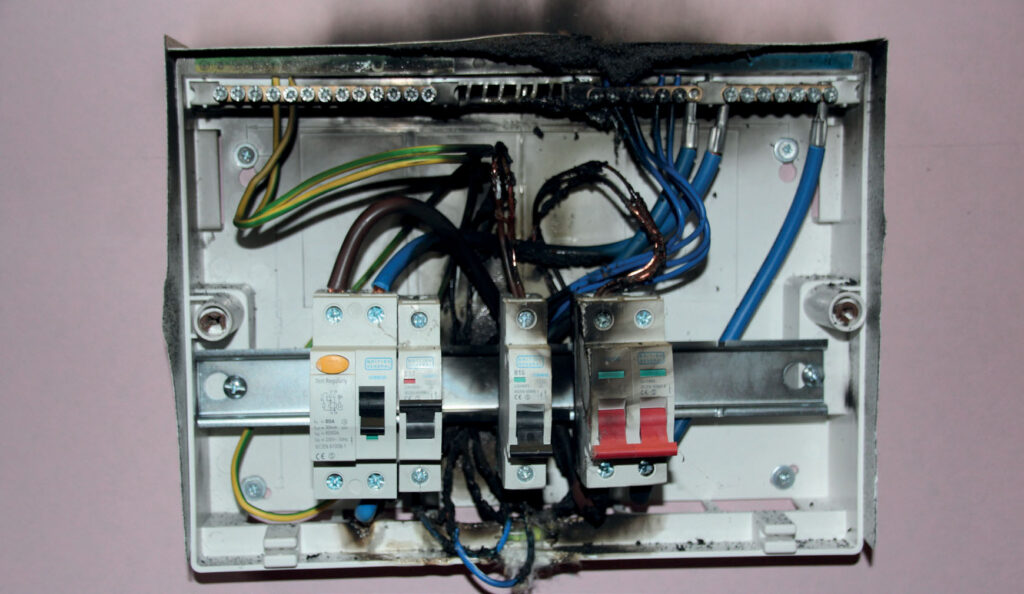
2. Compliance with Regulations
AFDDs are not just a luxury but are increasingly becoming part of electrical regulations. For example, BS 7671:2018 (18th Edition) of the IET Wiring Regulations recommends the use of AFDDs in higher-risk environments like sleeping accommodations, premises with vulnerable occupants, and buildings made from combustible materials. As more homes and businesses aim to meet higher safety standards, having an Arc Fault Detection Device installed will soon be the norm rather than the exception.
3. Enhanced Peace of Mind
There’s something comforting about knowing that your home or business is shielded from potential electrical fires. AFDDs work 24/7, scanning for the slightest irregularities and protecting your family, your home, and your valuable assets.
How Does an AFDD Work?
Now that we’ve covered what Arc Fault Detection Devices do and why they’re essential, let’s take a closer look at how they actually function. Don’t worry, we won’t get too technical!
1. Detecting Arcing Patterns
AFDDs are designed to identify the specific electrical signatures of arc faults. Not every electrical spark is a hazard (for instance, many appliances create harmless sparks when switched on), but AFDDs can differentiate between “good” arcs and “bad” arcs.
When an arc fault occurs due to damaged wiring or faulty appliances, the Arc Fault Detection Device picks up on the high-frequency electrical noise this creates. Using advanced algorithms, it identifies the fault and trips the breaker.

2. Cutting Off Power
Once an Arc Fault Detection Device detects a dangerous arc fault, it quickly shuts off the power to the affected circuit. This instantaneous reaction is crucial in preventing a potential fire from starting or spreading.
3. Constant Monitoring
One of the great things about AFDDs is that they work tirelessly in the background. They monitor every circuit they’re connected to, day and night, ensuring your home is constantly protected.
Choosing the Right AFDD: Key Factors to Consider
When shopping for an Arc Fault Detection Device, there are several factors to consider. Not all AFDDs are created equal, and understanding which features matter most to your specific situation is key to making an informed purchase.
1. Compatibility with Your Consumer Unit
Before purchasing an AFDD, it’s essential to ensure that it is compatible with your current consumer unit. Many modern consumer units from brands like Hager, FuseBox, and Live Electrical come with Arc Fault Detection Device ready slots, but if you have an older unit, you may need to upgrade or retrofit to accommodate this technology.
2. Number of Circuits
AFDDs are designed to protect individual circuits, meaning you’ll need one for each high-risk circuit in your home. This is particularly important in areas where wiring is more susceptible to damage or wear, such as in bedrooms, kitchens, or areas with heavy electrical loads (think air conditioning units or washing machines).
3. Manufacturer Reputation
Choosing a reliable brand is crucial for safety and performance. FuseBox, Hager, and Live Electrical are well-known manufacturers that have built a strong reputation for producing high-quality AFDDs and consumer units. Opting for a trusted brand can ensure the longevity and reliability of your system.
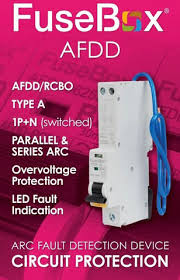
4. Integration with Other Protective Devices
AFDDs often work in tandem with other safety devices like RCDs and RCBOs. Some models combine multiple functions in one device, making installation easier and saving space in your consumer unit. Before purchasing, check if your Arc Fault Detection Device needs to be paired with other protective devices and ensure that your unit has enough capacity for these upgrades.
Who Should Install an AFDD?
AFDDs are designed to be installed by qualified electricians. Although the installation process may seem straightforward, it’s critical that all electrical safety devices are installed correctly to ensure proper protection. Electrical fires can be caused by small mistakes, such as faulty wiring or improper connections, so it’s always recommended to hire a certified electrician to install your Arc Fault Detection Device.
Where Should You Install AFDDs?
Not all circuits in your home require an Arc Fault Detection Device, but some areas should absolutely be protected. These include:
1. Bedrooms
Bedrooms are a high-risk area for arc faults, especially when considering that many electrical fires start while people are asleep. Installing an Arc Fault Detection Device on circuits that power bedroom lighting or outlets can significantly reduce this risk.
2. Kitchens
With multiple high-powered appliances and complex wiring, kitchens are another prime location for arc faults. An Arc Fault Detection Device can protect circuits powering ovens, dishwashers, and refrigerators.
3. Living Rooms
Given the number of electronic devices and entertainment systems in living rooms, it’s worth installing an AFDD here as well. TVs, sound systems, and game consoles can all put a strain on circuits, increasing the risk of arc faults.
4. Outbuildings and Garages
Garages and outbuildings, often with less stable wiring or exposed conditions, are ideal candidates for Arc Fault Detection Device protection. Protecting circuits that power tools, lighting, or EV chargers is crucial in these spaces.
The Future of AFDDs: A Cool Prediction
Imagine a world 100 years from now where electrical systems are fully automated, powered by renewable energy, and completely safe from faults. In the future, AFDDs could evolve into “self-healing” devices that not only detect arc faults but also repair them on the spot. They could even connect to a smart grid, communicating with central control systems to monitor the health of your entire electrical network.
Or, picture an Arc Fault Detection Device that monitors your wiring like a health app tracks your steps, sending you notifications about potential issues before they even become problems. No more unexpected trips to the consumer unit to reset your breakers—your smart Arc Fault Detection Device would have already resolved the issue and sent you a text to let you know.
While this sounds futuristic, the rapid pace of technological advancement suggests that such innovations may not be far off. The future of AFDDs could make home electrical systems safer, smarter, and more efficient than ever before.
Common Myths About AFDDs
1. AFDDs Are Just for Commercial Buildings
Many homeowners believe that AFDDs are only necessary in commercial buildings or high-risk industrial sites. However, domestic homes are just as prone to arc faults as commercial properties, especially in areas with older wiring. Protecting your home with an AFDD is just as important as safeguarding a workplace.
2. AFDDs Are Too Expensive
While it’s true that AFDDs add to the overall cost of your consumer unit, the protection they provide is priceless. Electrical fires can cost thousands of pounds in damage, not to mention the safety risks involved. Think of it as an investment in your home’s long-term safety.
3. My House Is New, So I Don’t Need an Arc Fault Detection Device
New builds are safer than older properties, but no home is completely immune to arc faults. Faulty appliances, electrical surges, or simple wear and tear over time can lead to arc faults, making AFDDs a wise choice for any property, old or new.
Conclusion
Buying an AFDD is a smart, forward-thinking decision that prioritizes the safety and longevity of your home’s electrical system. With arc faults being one of the leading causes of electrical fires, installing an Arc Fault Detection Device can offer invaluable peace of mind, especially in high-risk areas like bedrooms and kitchens.
As the technology behind AFDDs continues to evolve, we may soon see devices that do even more than just detect arc faults. From future-proofing your home to ensuring compliance with the latest safety regulations, an Arc Fault Detection Device is an essential component of any modern consumer unit.
See our full range of AFDD’s in stock here!
AFDD – Arc Fault Detection Device FAQ
An AFDD (Arc Fault Detection Device) is a device that detects dangerous electrical arcs and prevents them from causing fires.
AFDDs monitor electrical circuits for high-frequency patterns that signal an arc fault and disconnect the power when one is detected.
AFDDs should be installed in high-risk areas such as bedrooms, kitchens, and outbuildings.
No, AFDD installation should be done by a qualified electrician.
Yes, even new homes can benefit from the added protection AFDDs provide against arc faults.
AFDDs identify the high-frequency electrical patterns associated with arc faults. When an arc fault occurs, the device recognizes the unusual current behaviour and trips the circuit, stopping the fault before it can escalate into a fire.
An RCD (Residual Current Device) protects against earth faults by detecting leakage currents, while an AFDD specifically detects dangerous arc faults. Both provide essential protection, but an AFDD offers additional safety by targeting arc-related risks.
Yes, for the best protection. RCDs protect against earth faults, while AFDDs focus on arc faults. Together, they provide comprehensive electrical safety for your home.
AFDDs are not currently mandatory in all homes, but they are recommended in specific high-risk environments such as sleeping accommodations, homes with vulnerable occupants, and locations with combustible materials, according to the 18th Edition Wiring Regulations.
The cost of an AFDD can vary, typically ranging from £50 to £150 per device, depending on the brand and the specific features. Installation costs by a qualified electrician should also be factored in.
AFDDs do not require regular maintenance, but it is advisable to have your electrical system, including AFDDs, periodically inspected by an electrician to ensure they are functioning correctly.
Each AFDD protects an individual circuit. For comprehensive protection, you would need an AFDD for each high-risk circuit in your home, such as those powering bedrooms, kitchens, and appliances.
AFDDs are designed specifically to detect arc faults. They do not replace other devices like RCDs or MCBs, which protect against different electrical faults such as overloading and earth faults.
An RCBO (Residual Current Breaker with Overcurrent protection) provides protection against overcurrent and earth leakage faults but does not detect arc faults. An AFDD, on the other hand, is specialized for detecting arc faults. Some modern devices combine AFDDs with RCBO functionality for all-around protection.
Yes, AFDDs are especially beneficial in older properties where wiring may be more susceptible to wear and tear, increasing the risk of arc faults. Installing AFDDs can help prevent electrical fires in homes with outdated wiring.
Reputable manufacturers include FuseBox, Hager, and Live Electrical. These brands offer reliable AFDD products that meet industry standards and provide top-notch safety for homes and businesses.
Yes, AFDDs can detect arc faults caused by faulty appliances and damaged wiring. However, they are not a substitute for regular appliance maintenance, which is also crucial in preventing electrical fires.
AFDDs are designed to avoid nuisance tripping by differentiating between harmless arcs (such as those caused by certain switches or appliances) and dangerous arc faults. However, a poorly installed or incompatible AFDD may result in unwanted trips, which is why professional installation is critical.
The typical lifespan of an AFDD is around 10-15 years, similar to other electrical safety devices. However, regular testing and inspections by a qualified electrician will ensure they remain in working order.
In many cases, AFDDs can be retrofitted into existing consumer units. However, this depends on the type and age of your consumer unit. It’s best to consult a qualified electrician to assess compatibility.
While AFDDs aren’t specifically required for EV charger consumer units, they provide an additional layer of safety by detecting arc faults that could occur in high-load circuits, such as those used for electric vehicle charging.
AFDDs typically have a test button, similar to RCDs. Pressing the test button simulates a fault, and the AFDD should trip. If it doesn’t, or if you’re unsure, it’s essential to have a licensed electrician inspect it.
The main downside of AFDDs is the additional cost they add to the overall price of a consumer unit installation. However, the increased safety and peace of mind they offer far outweigh the upfront expense, especially when considering the potential cost of an electrical fire.






